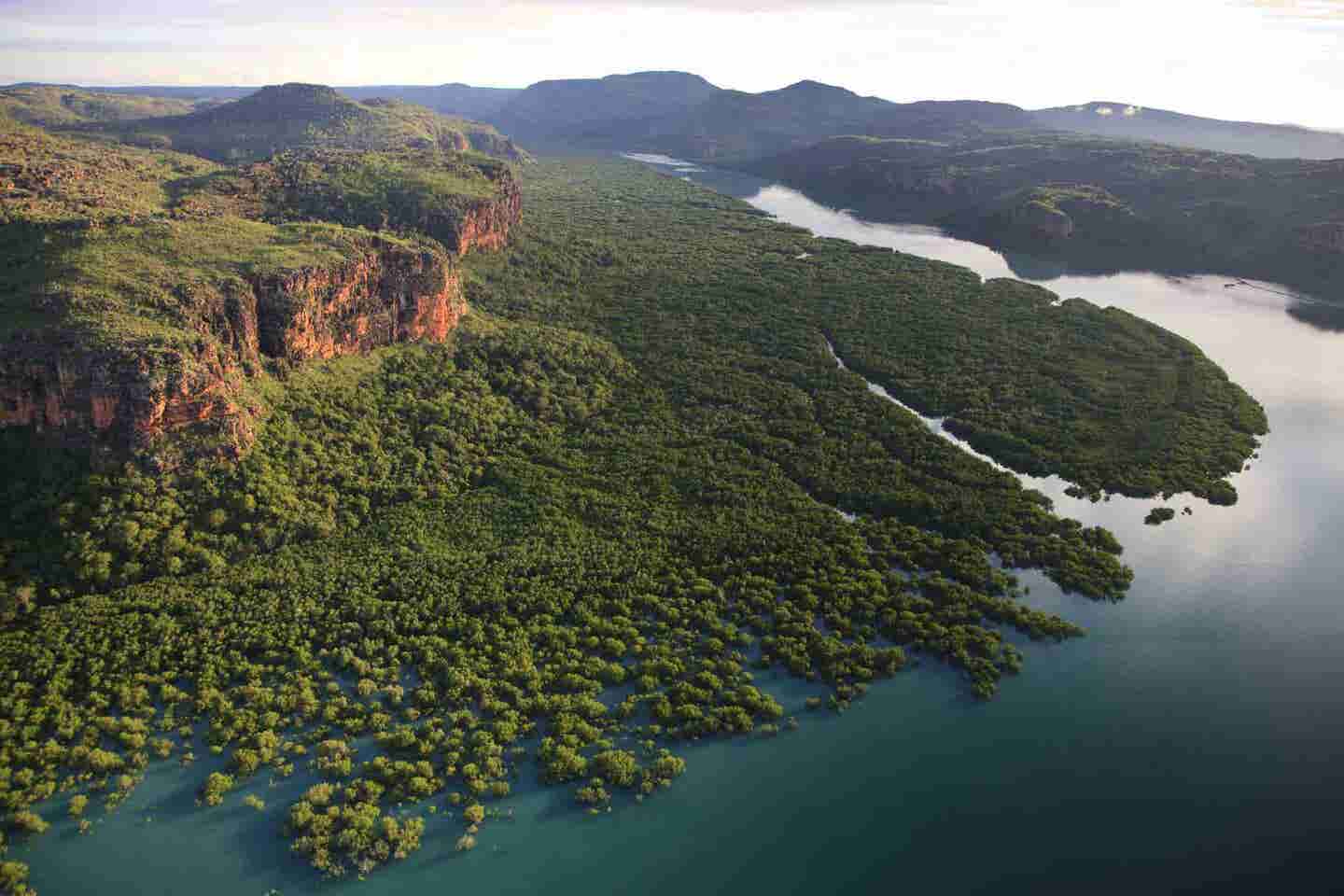2.5 million-year-old lost colony found hidden off the coast of Australia
Researchers have discovered a large, long-lost colony that was once full of human life, hidden under the water off the coast of Australia.

In an exciting find that has amazed archaeologists and scientists, researchers have discovered a large, long-lost colony that was once full of human life, hidden under the water off the northern coast of Kimberley, Australia.
This underwater settlement, which dates back to the Late Pleistocene period about 2.5 million years ago, has provided evidence of its ancient inhabitants and important information about early human migration and the significant effects of climate change on ancient civilizations.
A Bridge to the Past
One of the most fascinating aspects of this discovery is the possibility that the submerged landmass may have served as a vital bridge connecting ancient civilizations. "It's plausible that this land was used as a pathway for migration," says Dr. James Bennett, an environmental historian and contributor to the study. "Before Australia became the island we know today, it could have been accessible by foot."
This notion challenges existing theories on early human migration, suggesting that these submerged lands may have played a pivotal role in facilitating the movement of people across vast stretches of the Earth during the Late Pleistocene period.
The findings, outlined in a recent study published in Quaternary Science Reviews, are rewriting the history books and shedding new light on our human ancestors' remarkable ability to adapt and thrive in the face of changing landscapes.
The submerged colony's existence came to light as researchers meticulously explored the underwater realm, which had once been a thriving ecosystem on a landmass nearly 250,000 square miles in size—equivalent to 1.6 times the area of the United Kingdom. Initial excavations revealed a treasure trove of artifacts and signs of human life, hinting at a flourishing civilization that had long been obscured by the ocean's depths.
Related Stories
"The findings are nothing short of astonishing," says Dr. Emily Watson, a renowned archaeologist and co-author of the study. "We've uncovered a forgotten world that was not only inhabited by humans but also rich in ecological diversity."
Intriguingly, the submerged landmass, although potentially a desert at some point in its history, once boasted an intricate network of freshwater and saltwater lakes, rivers, and even an inland sea. This thriving aquatic environment would have been a lifeline for the estimated 50,000 to 500,000 people believed to have called this submerged realm home.
The Rise and Fall of an Ancient Civilization
The demise of this once-thriving colony is a sobering reminder of the profound impact of climate change on human populations throughout history. Approximately 12,000 years ago, around the end of the Pleistocene epoch, rising sea levels caused half of the landmass to succumb to the encroaching waters, submerging it forever beneath the ocean's surface. The inhabitants of the colony, faced with a dramatically altered environment, adapted by moving to nearby archipelagos. This adaptation marked the beginning of a new chapter in human history—the "first maritime explorers from Wallacea."
"The resilience and adaptability of these ancient people is truly remarkable," notes Dr. Watson. "Their ability to forge new lives in response to environmental upheaval laid the foundation for future generations."
Unraveling the Mysteries of the Past
While the discovery of the submerged colony is a monumental breakthrough in itself, researchers are only scratching the surface of its historical significance. Scientists are currently delving deeper into the colony's history, aiming to reconstruct the palaeoecology of the landscapes that once flourished above the waves.
The study's authors emphasize the importance of their findings in a global context. "Now submerged continental margins clearly played an important role in early human expansions across the world," the study states. This revelation underscores the need for greater exploration of underwater archaeology, not only in Australia but across the globe. As humanity grapples with the consequences of climate change, understanding how our ancestors adapted to changing environments offers valuable insights into how we might navigate the challenges of the present and the future.
A Growing Global Perspective
The rise of undersea archaeology in Australia promises to contribute significantly to our understanding of early human migration patterns and the far-reaching impact of climate change on ancient populations during the Late Pleistocene period.
As technology and research techniques continue to advance, scientists are hopeful that more submerged secrets will come to light, further enriching our understanding of our shared human heritage.
As we continue to explore the mysteries of the past hidden beneath the waves, we gain valuable insights into our shared human journey and the lessons it holds for the challenges we face in the present and future.
Note: Materials provided above by the The Brighter Side of News. Content may be edited for style and length.
Like these kind of feel good stories? Get the Brighter Side of News' newsletter.
Joseph Shavit
Head Science News Writer | Communicating Innovation & Discovery
Based in Los Angeles, Joseph Shavit is an accomplished science journalist, head science news writer and co-founder at The Brighter Side of News, where he translates cutting-edge discoveries into compelling stories for a broad audience. With a strong background spanning science, business, product management, media leadership, and entrepreneurship, Joseph brings a unique perspective to science communication. His expertise allows him to uncover the intersection of technological advancements and market potential, shedding light on how groundbreaking research evolves into transformative products and industries.



